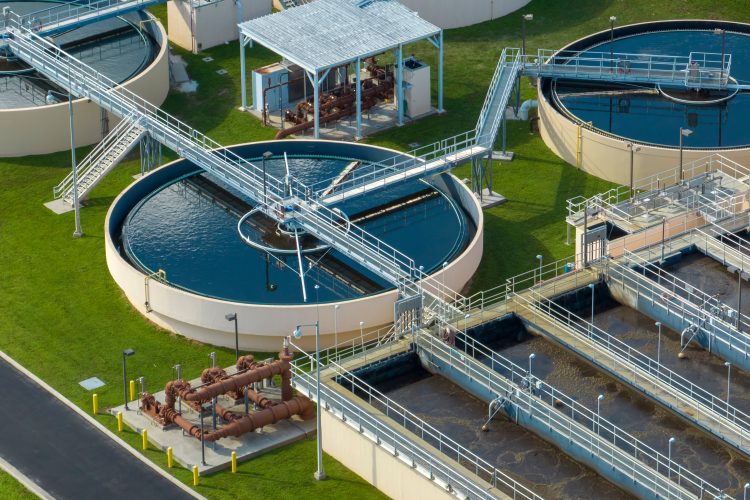Scientists remove forever chemicals from water using new method
- Like
- Digg
- Del
- Tumblr
- VKontakte
- Buffer
- Love This
- Odnoklassniki
- Meneame
- Blogger
- Amazon
- Yahoo Mail
- Gmail
- AOL
- Newsvine
- HackerNews
- Evernote
- MySpace
- Mail.ru
- Viadeo
- Line
- Comments
- Yummly
- SMS
- Viber
- Telegram
- Subscribe
- Skype
- Facebook Messenger
- Kakao
- LiveJournal
- Yammer
- Edgar
- Fintel
- Mix
- Instapaper
- Copy Link
Posted: 6 March 2024 | Grace Galler | No comments yet
By using a novel electrocatalysis method, researchers claim to have removed forever chemicals from water in a recent study.


A team of scientists have shared that they have been able to remove “harmful forever chemicals” from water using a new electrocatalysis method.
The novel approach reportedly uses laser-made nanomaterials made from nonprecious metals, something the team say “could lay the foundation for globally scalable remediation techniques”.
Carried out by scientists from the University of Rochester, the study aimed to work out ways to “clean up pollution” from forever chemicals found in food packaging, amongst other things such as clothing and firefighting foams.
The study was published in the Journal of Catalysis and describes how nanocatalysts have been developed to remediate per- and polyfluoroalkyl substances (PFAS)
Led by Assistant Professor of Chemical Engineering, Astrid Müller, the research team focused on a specific type of PFAS called Perfluorooctane sulfonate (PFOS). Despite it previously being used for for stain-resistant products, PFOS is now banned in much of the world, however the researchers have found that it is “still widespread and persistent in the environment despite being phased out by US manufacturers in the early 2000s, continuing to show up in water supplies”.
During the study, Müller and her team of materials science PhD students created the nanocatalysts using her unique combination of expertise in ultrafast lasers, materials science, chemistry, and chemical engineering.
“Using pulsed laser in liquid synthesis, we can control the surface chemistry of these catalysts in ways you cannot do in traditional wet chemistry methods,” says Müller. “You can control the size of the resulting nanoparticles through the light-matter interaction, basically blasting them apart.”
Following that the scientists then adhere the nanoparticles to carbon paper that is hydrophilic, or attracted to water molecules. Then, using lithium hydroxide at high concentrations, they completely defluorinated the PFOS chemicals.
Müller explained that in order for the process to work at a large scale, they will need to treat at least a cubic meter at a time. Crucially, their novel approach uses all nonprecious metals, unlike existing methods that require boron-doped diamond.
PFAS contamination found in processed meats, teas and packaging
According to the scientists calculations, treating a cubic meter of polluted water using boron-doped diamond would cost $8.5 million; and they say that their new method is “nearly 100 times cheaper”.
Looking to the future, Müller has said that they hope to to understand why lithium hydroxide is efficient and whether less expensive, more abundant materials can be substituted to bring the cost down further.
In addition, Müller has said that she is interested in applying the method to an array of PFAS chemicals that are still prevalently used but have been linked to health issues ranging from development in babies to kidney cancer.
But when it comes to concerns that PFAS should be banned altogether, Müller says that outright banning all PFAS chemicals and substances is “not practical because of their usefulness in not only consumer products, but in green technologies as well.
“I would argue that in the end, a lot of decarbonisation efforts—from geothermal heat pumps to efficient refrigeration to solar cells—depend on the availability of PFAS. I believe it’s possible to use PFAS in a circular, sustainable way if we can leverage electrocatalytic solutions to break fluorocarbon bonds and get the fluoride back out safely without putting it into the environment,” explained Müller.
The scientists have shared that commercialisation is “a long way off” but Müller has now filed a patent with support from URVentures, and expects it to be used at wastewater treatment facilities and by companies to clean up contaminated sites where they used to produce these PFAS chemicals.
Related topics
Food Safety, Product Development, Quality analysis & quality control (QA/QC), Research & development, Water, World Food








